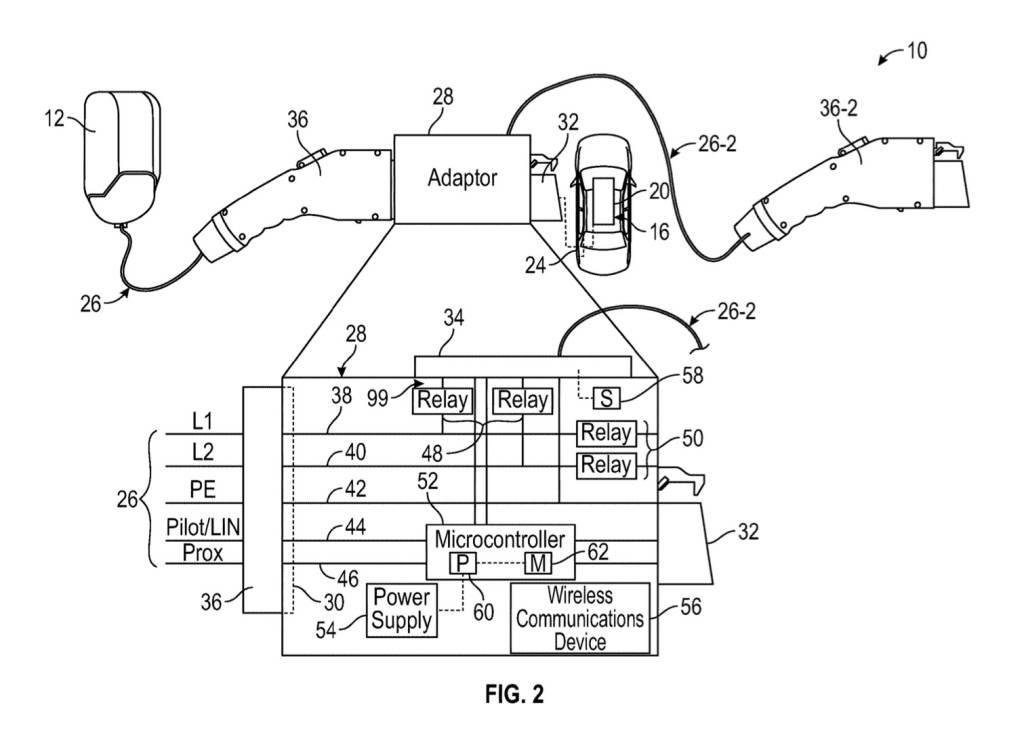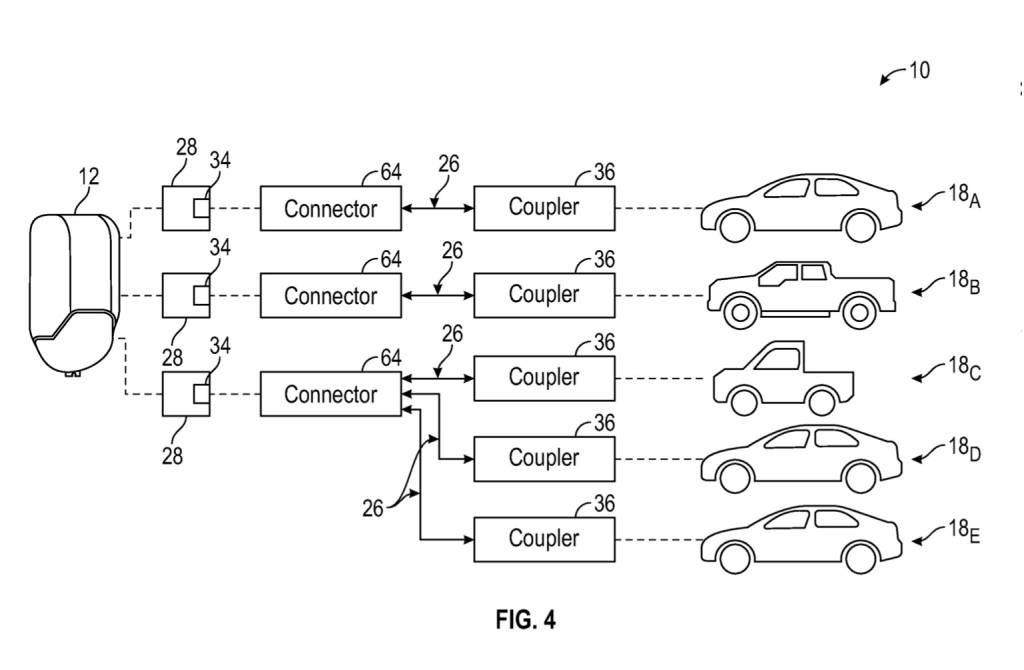A recent Ford patent filing examines using bidirectional charging and an adapter to charge multiple vehicles from the same power source—with potential fleet applications.
A Ford patent application published by the United States Patent and Trademark Office (USPTO) July 27, 2023, and originally filed January 26, 2022, details the charging of multiple vehicles by plugging a first vehicle into a charging station conventionally, and using adapters that could connect a vehicle’s charge port to a charging cable to loop in other vehicles.

Ford bidirectional charging adapter patent image
A coupling and microcontroller in the adapter would allow a vehicle equipped for bidirectional charging to discharge power from its charge port, through the adapter and connected charging cable, to another vehicle.
Ford is already implementing bidirectional charging, including hardware that allows the F-150 Lightning to act as a home backup power broker. But this adapter could be particularly useful to corporate buyers of the F-150 Lightning Pro and other fleet EVs, allowing multiple vehicles parked at the same garage to be charged together off one charging station.

Ford bidirectional charging adapter patent image
Ford doesn’t specifically mention this use in its patent filing, but Rivian did in a patent application for a similar pass-through charging system published by the USPTO June 22. The ideas presented in both applications appear permissible under current standards, which don’t allow extension cords to connect chargers and vehicles but would likely allow vehicles to be used to relay power from a single charger.
While clever, there’s no guarantee Ford’s bidirectional charging adapter will reach production. The automaker is a prolific publisher of patent applications—including one for a magnetic charging connector that sounds a bit like an Apple MagSafe connector for EVs—but they don’t all advance beyond the patent stage.

